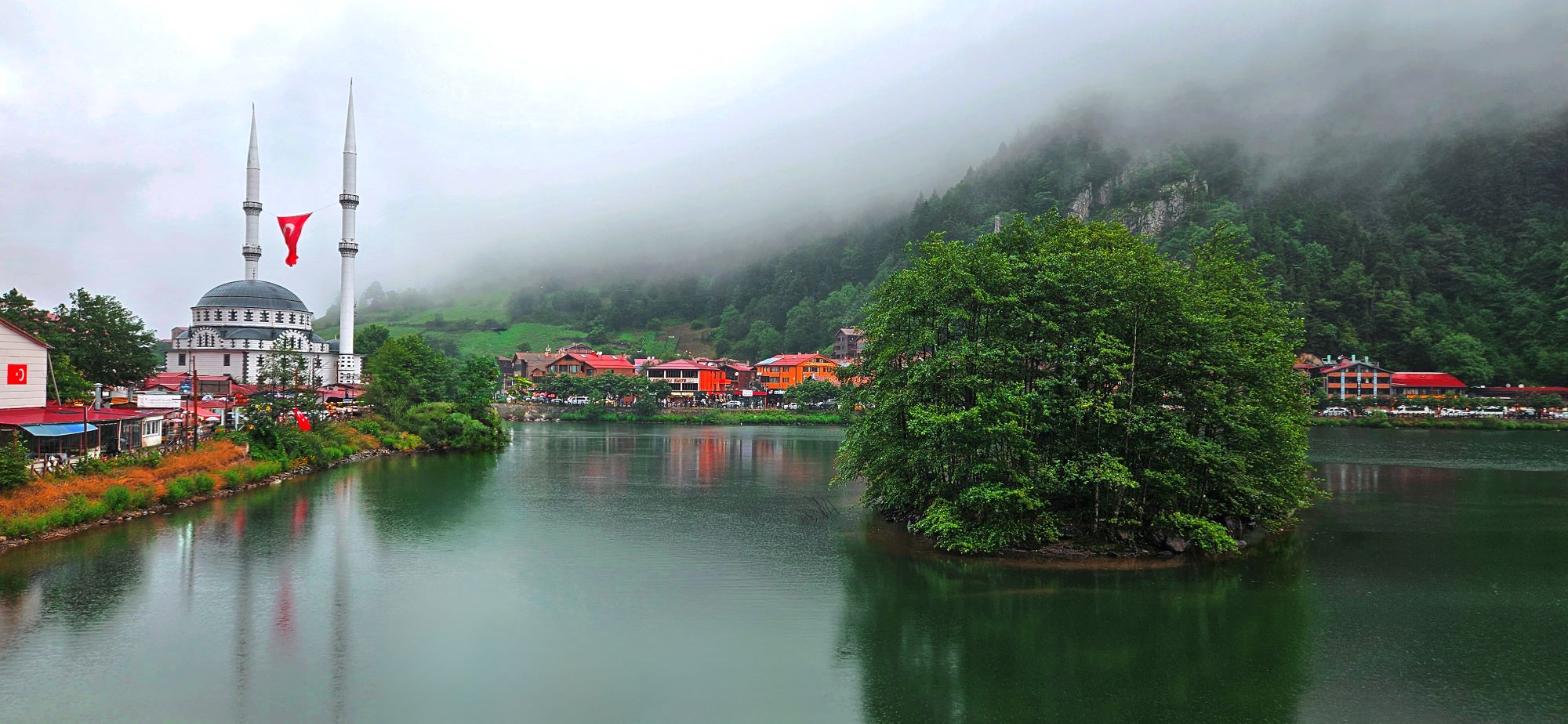
Trabzon: Intriguing for all the Right Reasons
Trabzon may seem like an unlikely destination, especially for the summer! Here are all the reasons why I found Trabzon an intriguing adventure.
[All photo copyrights belong to the author]
Trabzon has been on my bucket list for two years. Ever since I saw an image of the Sümela Monastery nestled in the steep, emerald green Trabzon mountains, I couldn’t get the image out of my head. I know I had to go visit one day! And the day finally arrived; this August 2025 I visited Trabzon for the first time in my life. I am happy to share my adventures there in this article.
Trabzon airport is a 2-hour flight from İstanbul airports like Sabiha Gökçen Airport. Its landscape and climate is so different than İstanbul, it could seem to be in an entirely different country. Trabzon is home to the 4th century Greek Orthodox monastery known as Sümela monastery. It is also home to Uzungöl Lake, the villagescape of Hamsiköy, and it neighbours the Gümüşhane region. Its geography is quite unique, because it rests on Türkiye’s North coast bordering the Black Sea, and yet has the high altitude of the Pontic Mountains running parallel to the shores. It has dense forests, valleys, rivers, waterfalls and mountain ranges. Trabzon is often nicknamed ‘The Emerald Green City’ due to the verdant landscapes that surround the entire region.
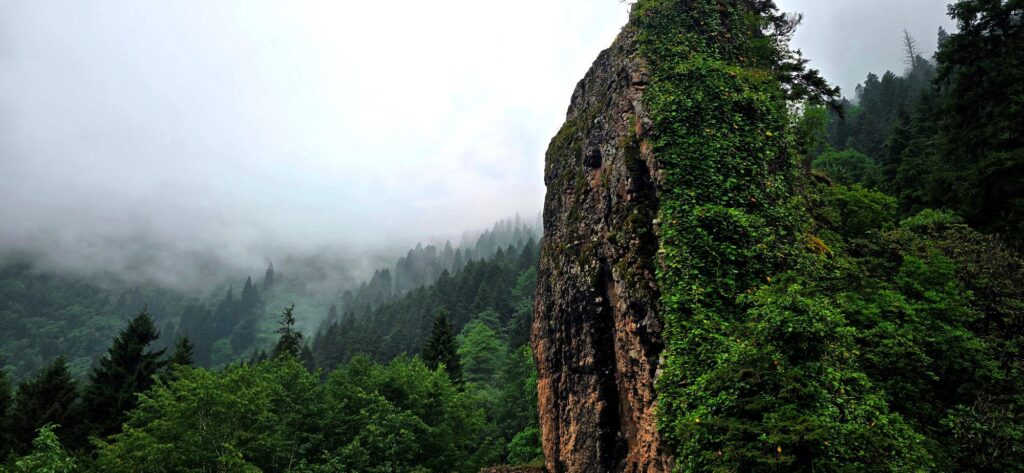
The lush green landscapes of Trabzon (photo by the author)
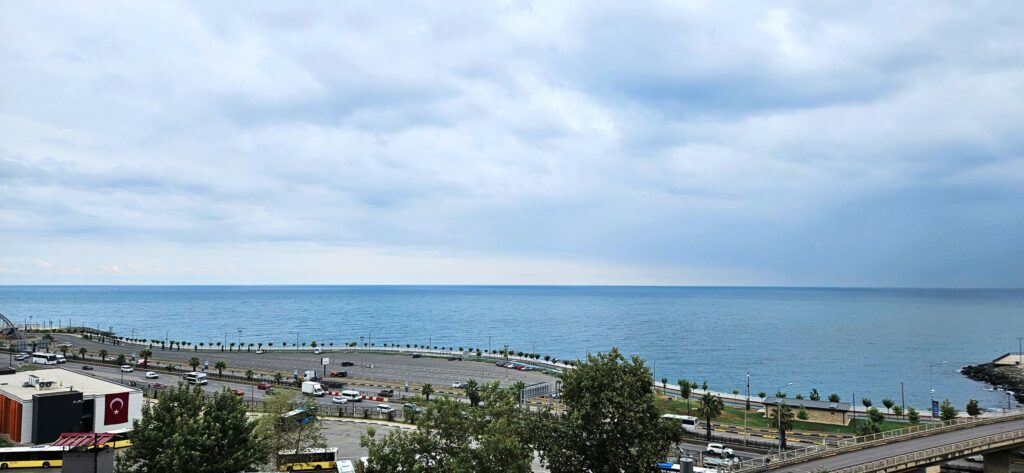
The Black Sea as seen from the shores of Trabzon (photo by the author)
My choice to go in August was a risky one. Since Trabzon has a humid, sub-tropical climate, it rains all year round, almost. In fact, July is the driest month. But I took the risk, and fortunately the day I visited Sümela there was no rain (that would have made the climb quite slippery). It only rained during the visit to Uzungöl lake, and then it was simply light showers, nothing serious. In general, it was quite humid, but not ‘hot’; the weather most of the time was in the 20s [degrees Celsius].
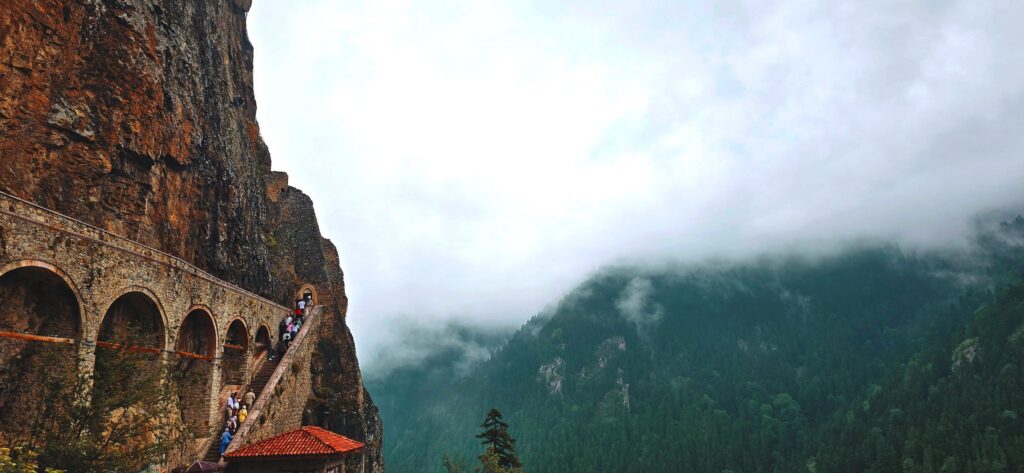
The Path leading to Sümela Monastery (photo by the author)
Sümela was the gem of the trip. I decided not to read much about Sümela until I got there; I wanted to be surprised, intrigued, astounded. And indeed I was. Sümela was founded in 386 AD by two Athenian monks, Barnabas and Sophronios, during the reign of the Byzantine Emperor Theodosius I. Legend has it that they didn’t know each other; they lived far from Trabzon and both had the same dream. In the vision, they saw the Virgin Mary who appeared to them in that location and, in their wake, She guided them to that very site. Approaching the cliff from opposite sides, they met, face to face. After sharing the messages they both experienced, they decided to build the monastery there, dedicated to the Virgin Mary.
Sümela Monastery thrived under the reign of the Byzantine emperors, as it did also under the Empire of Trebizond. It became a pilgrimage destination. When the Ottoman Empire conquered Trebizond/Trabzon in 1461 A.D., the Sultan granted Sümela protection and privileges. The history of the monastery would take an unexpected turn in 1923; as a result of the compulsory population exchange between Greece and Türkiye, the Greek Orthodox monks were forced to abandon Sümela. The monastery fell into disrepair and vandalism took place, including the defacement of much of the frescoes and icons.
Eventually, the Turkish government took notice of Sümela’s important historical and cultural value. Some restoration efforts were put in place, and the monastery now operates as a tourist site.
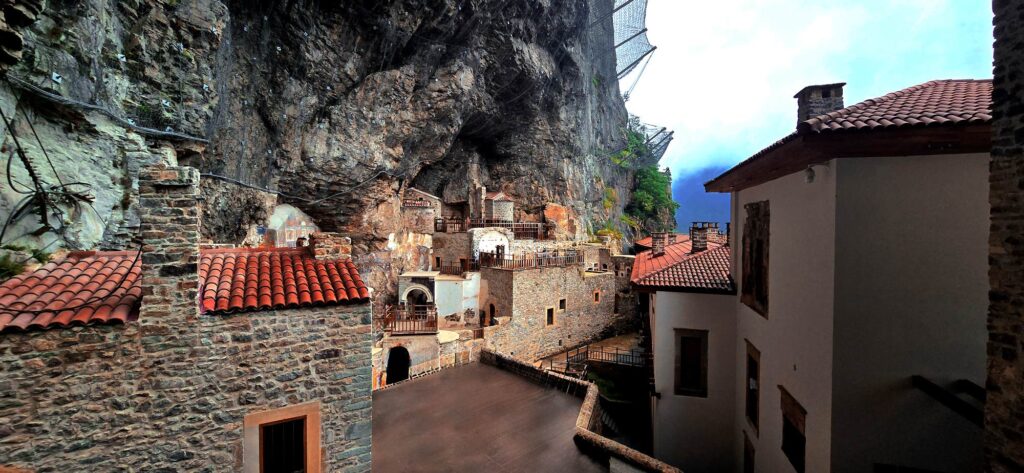
Sümela Monastery complex has been built up and extended over a period of several hundred years (photo by the author)
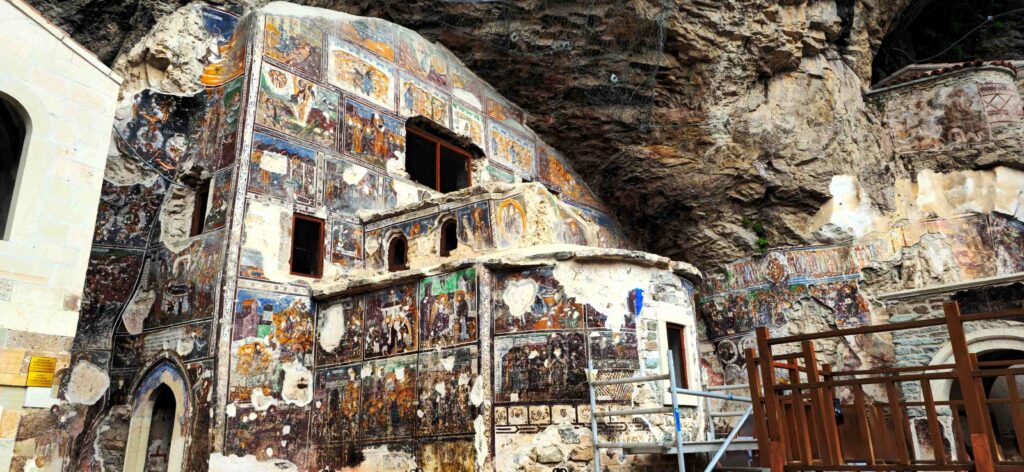
The outer area of the Sümela chapel covered in frescoes, that have been defaced and vandalised (photo by the author)
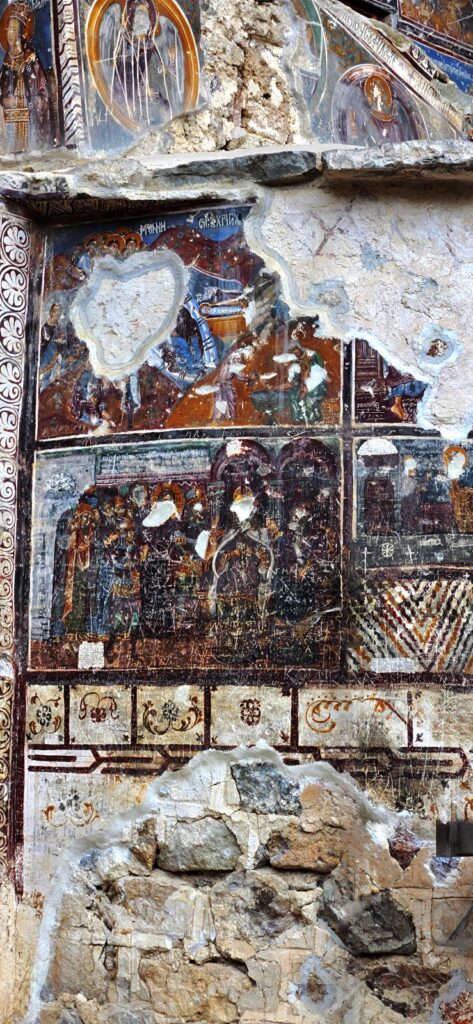
Details of the defaced frescoes (photo by the author)
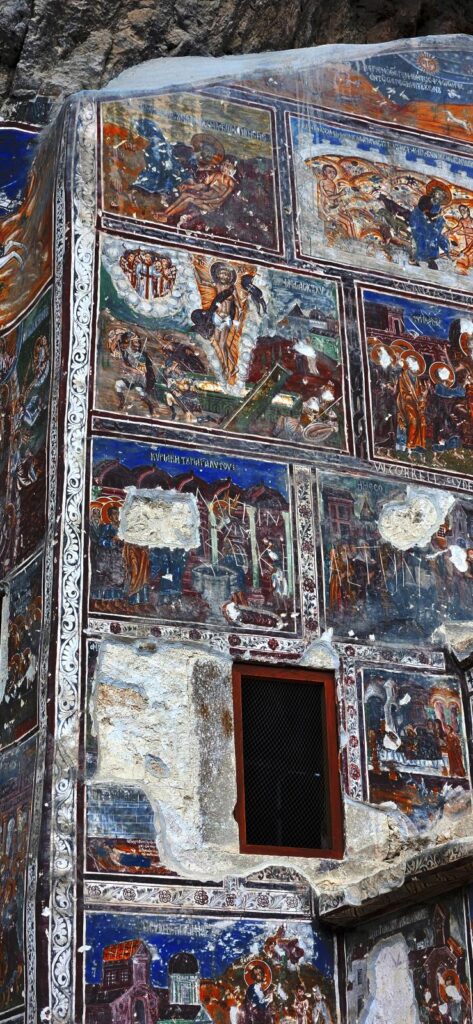
More details of the defaced frescoes (photo by the author)
I found the Monastery complex to be quite intricate and laden with history. One can really imagine how, not so long ago, monks lived their lives there. The priest room is quite small, intimate and there are cabinets, shelves, a fireplace and a small area where the bed would be; it really reflects the humble nature of the monks and how they lived their lives so modestly.
"one can really imagine how, not so long ago, monks lived their lives there." maie el-hage
The chapel with its frescoes is sadly defaced. The frescoes appear to be quite thorough in telling the stories from the New Testament. There are many individuals portrayed, often with epithets. Unfortunately, the vandalism includes writings carved into the fresco slabs, often overlapping the epithets which makes them hard to read. Inside, the two largest icons which are, thankfully, not defaced are the Theotokos and the Christ Pantokrator. It is interesting to see the way that the Virgin Mary and the Lord Christ are depicted; with large features and very human expressions. Mary’s wrists and robes are bejeweled. Christ Pantokrator is surrounded by texts and seraphims. And, speaking of texts, at the very top of the entrance to the main chapel is a large marble slab with Byzantine Greek inscription, which reads like the following:
“The one who will live without fraudulence and deception will join Jesus and Holy Mary in the kingdom of heaven.”
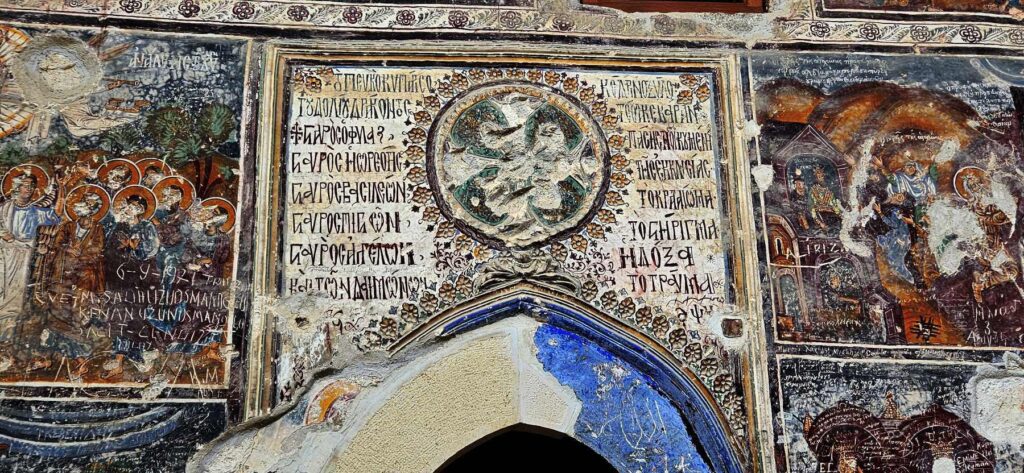
Byzantine Greek text reads: “The one who will live without fraudulence and deception will join Jesus and Holy Mary in the kingdom of heaven.” (photo by the author)
The views from the monastery itself are quite stunning; one can see the verdant, lush green landscapes from almost every vantage point. At the moment, the government has installed nets to catch the falling rocks and keep the tourists safe. There is another vantage point that is quite popular, where one can see the Sümela Monastery in its position within the mountain; indeed, most of the tourists go to this spot to take the iconic pictures.
It was very rewarding for me to visit this important destination. One can only imagine its glory when it was inhabited by the very monks it was built for. Hopefully, more restorations can take place and the remaining frescoes can continue to be protected from further vandalism.
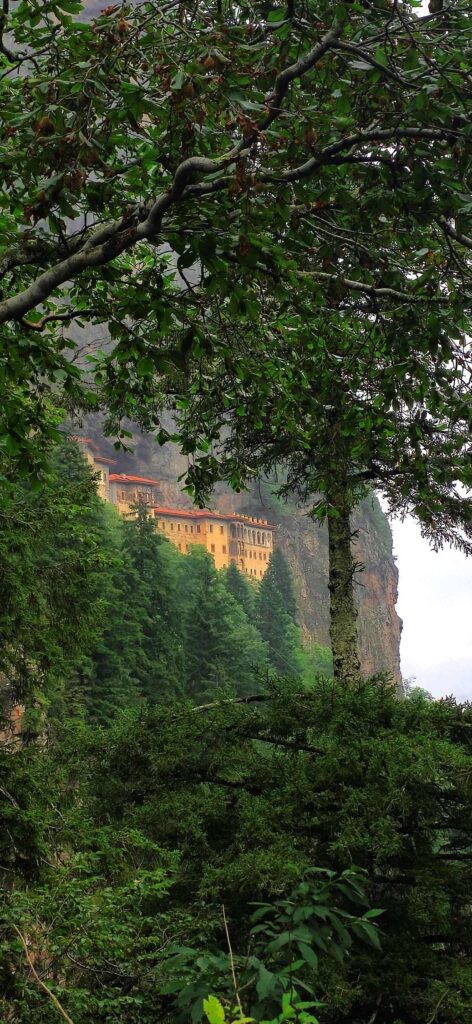
The iconic view of Sümela Monastery (photo by the author)
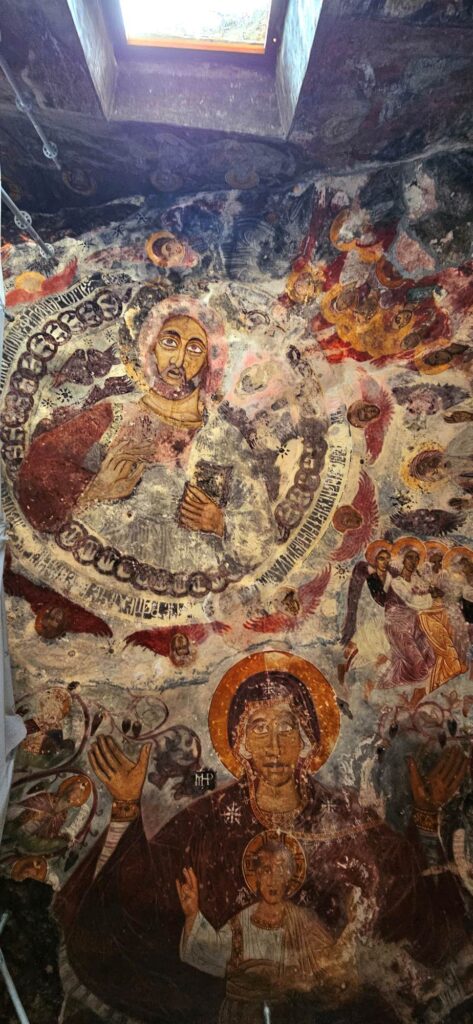
Two intact icons (frescoes) in the ceiling of the chapel. Above: Christ Pantokrator. Below: Theotokos. (photo by the author)
After leaving Sümela, our next destination was Hamsiköy. The name of this region derives from the Arabic word ‘Khamsa’ which means ‘Five’, and ‘Köy’ means village. Hence, the word means the ‘Five villages’, and it was named as such because of the villages that were built once this region prospered due to its location on the silk road. The landscape of Hamsiköy is typical of Trabzon; lush, green forests and fields which appear emerald-colored underneath the mists. In fact, it was quite different from our next destination which we had to reach going through the Zigana tunnel.
The Zigana tunnel is the longest tunnel in Europe, spanning 14.4 kilometers. We entered it from the side of Trabzon and, after 20 minutes, we emerged from the side of Gümüşhane, which has a completely different landscape and climate. It was like going through a portal! Gümüşhane’s landscapes are more arid than Trabzon’s; for a change, one can see the rocks and rock formations. The tree cover is also quite less and, magically enough, it seemed the sun shone brighter here! The mist had lifted. It was really quite an experience.
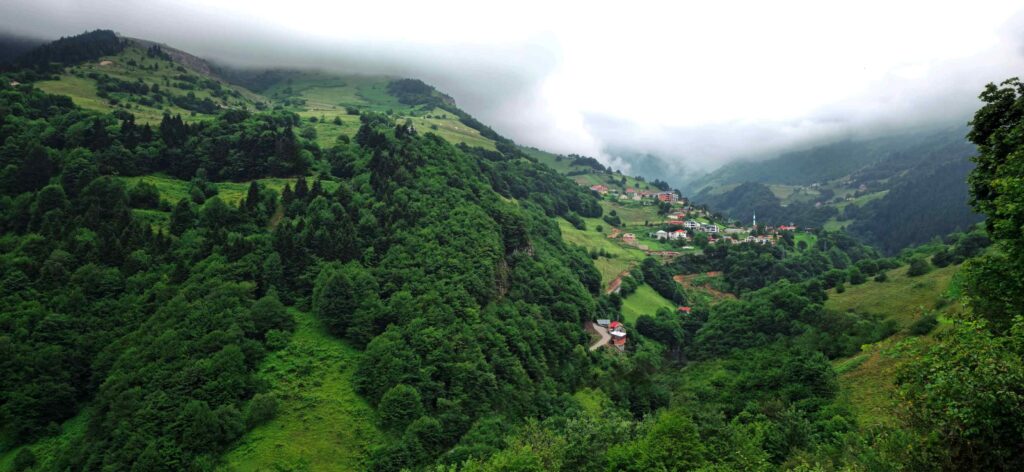
View of one of the villages of Hamsiköy (photo by the author)
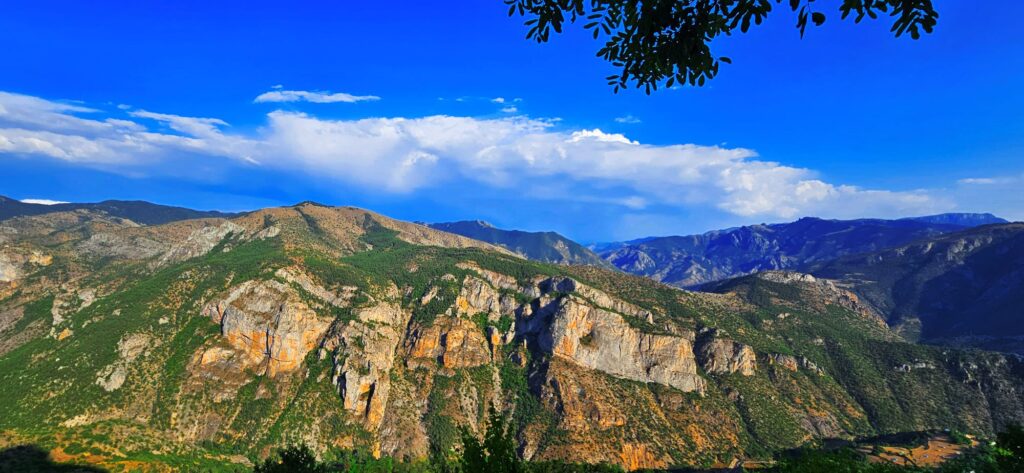
View of the mountains of Gümüşhane, separated from Trabzon by the Zigana tunnel (photo by the author)
My second day in Trabzon was centered more on visiting the waterfalls, and of course, Uzungöl Lake. Uzungöl Lake is quite scenic, definitely, albeit this once peaceful natural wonder is now completely encircled by restaurants and shops. It is a magical tourist destination, but would be more wondorous if it were less crowded. It rained a bit on this day, but they were light showers and I was still able to enjoy the visit.
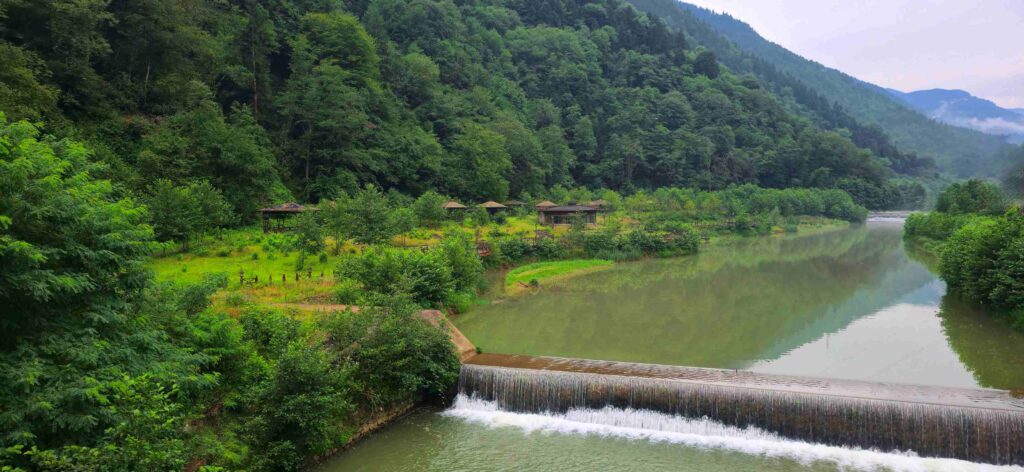
One of the many waterfalls of Trabzon. (photo by the author)
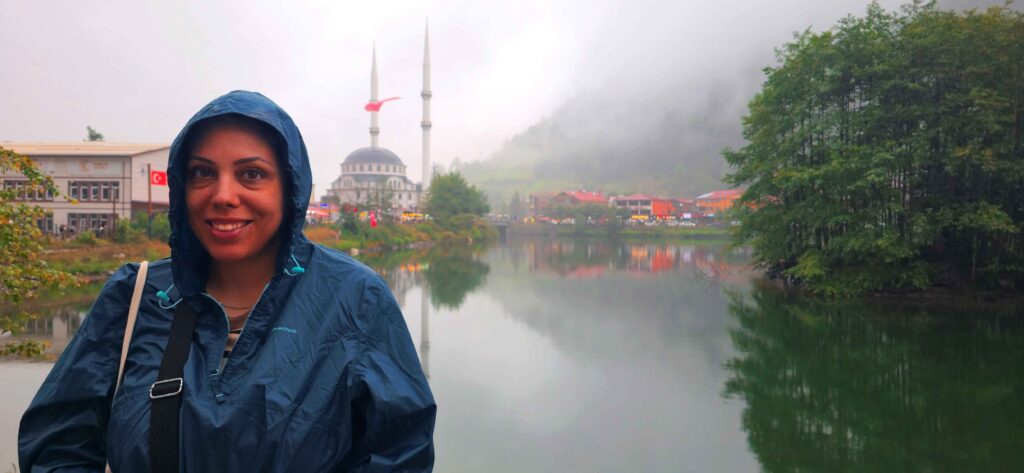
The author Maie El-Hage by Uzungöl Lake (photo copyright belongs to the author)
In conclusion, I truly encourage my readers to visit Trabzon during the summer (or spring from what I hear!). If one is creating an itinerary in Türkiye, then Trabzon should be on the list. You don’t need a lot of time here, I was able to make all the visits in the matter of 2 days, (I only stayed 3 nights in Trabzon). You can truly enjoy the history, the nature, the climate, and of course, the extremely friendly and hospitable people of Türkiye.
Thank you for reading. To see some reels and photos from Trabzon, I invite you to follow my instagram channel here.
You may also like
My Take on Marc Chagall
Marc Chagall was a Belarusian artist born on July 6, 1887 in Vitebsk. He died in France on March 28,
Art on 56th Gallery marks end of 10th Season with Collective Show
Art on 56th Gallery is currently celebrating the end of their 10th season with a Collective Exhibiti
Ambitious exhibition “Lavinia” by MIA Art Collection transports Italian Mannerist Art to Dubai’s DIFC
“Lavinia” an ambitious exhibition by MIA Art Collection, brings the work of Italian Mannerist ar








